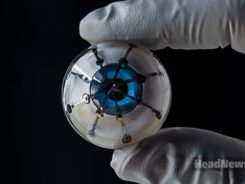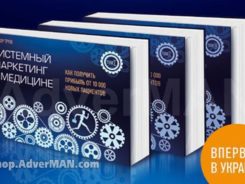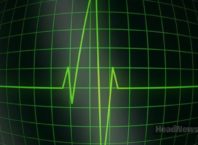Используя микроскопические моторы для лечения и диагностики отклонений в теле человека, можно победить почти все болезни, уверены эксперты. Однако есть проблема – как доставить микромоторы, не навредив тканям и при этом сохранив целостность самих роботизированных систем.
Выходом оказалось создание “умных капсул” – системы, несущие с собой лекарственную начинку, поместили в таблетки. Моторы – микроскопические роботизированные системы – не превышают по размерам толщину человеческого волоса.
Поэтому уместить их в капсулу не составило труда (ученые уместили десятки тысяч микроскопических систем, сделанных из диоксидов магния и титана). В рамках последнего исследования моторы покрывали антибиотиком для лечения язв у мышей.
Этот метод доставки препаратов работал лучше, чем стандартный прием антибиотиков. Защищающая системы оболочка была создана из сахаров – лактозы и мальтозы. Было доказано: капсулы улучшали высвобождение и удержание микросистем в желудке.
* * *
Using tiny micromotors to diagnose and treat disease in the human body could soon be a reality. But keeping these devices intact as they travel through the body remains a hurdle. Now in a study appearing in ACS Nano, scientists report that they have found a way to encapsulate micromotors into pills. The pill’s coating protects the devices as they traverse the digestive system prior to releasing their drug cargo.
About the width of a human hair, micromotors are self-propelled microscopic robots designed to perform a host of biomedical tasks. In previous research, Joseph Wang, Liangfang Zhang and colleagues used micromotors coated with an antibiotic to treat ulcers in laboratory mice. They found that this approach produced better results than just taking the drugs by themselves. However, the researchers noted that body fluids, such as gastric acid and intestinal fluids, can compromise the effectiveness of micromotors and trigger early release of their payloads. In addition, when taken orally in fluid, some of the micromotors can get trapped in the esophagus. To overcome these issues, Wang and Zhang sought to develop a way to protect and carry these devices into the stomach without compromising their mobility or effectiveness.
The researchers created a pill composed of a pair of sugars — lactose and maltose — that encapsulated tens of thousands of micromotors made of a magnesium/titanium dioxide core loaded with a fluorescent dye cargo. These sugars were chosen because they are easy to mold into tablet, can disintegrate when needed and are nontoxic. When given to laboratory mice, these pills improved the release and retention of the micromotors in the stomach compared to those encapsulated in silica-based tablets or in a liquid solution. The researchers concluded that encapsulating micromotors in traditional pill form improves their ability to deliver medicines to specific targets without diminishing their mobility or performance.












































